The Bells of Annecy
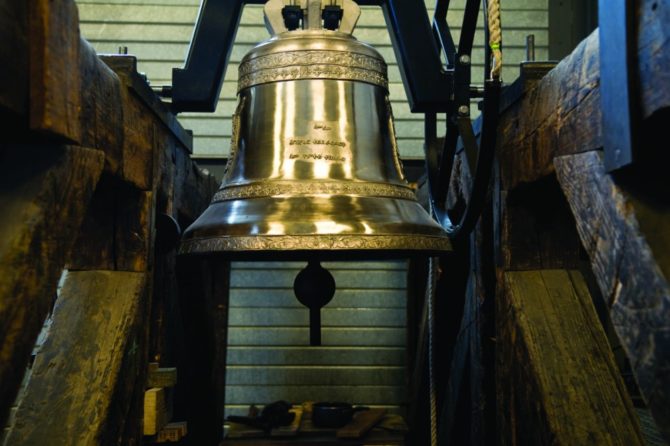
From a remote Congo village, University Hall in Taipei, the Canadian wine country, the Basilica of Sacré Coeur in Paris and Independence Hall in Philadelphia come a call to prayer, the marking of time, a warning, the celebration of a wedding or the ring of freedom—all sounded by bells cast in the Paccard foundry on the shore of pristine Lac d’Annecy in Haute Savoie. One of the last bell foundries in France, the Paccard enterprise was launched in the late 18th century and continues the family tradition today.
The art of bell casting relies on the skills of expert artisans who hand down their knowledge from generation to generation—seven generations for the Paccards, in fact. Even now—except for a large Apple computer keeping track of orders in the foundry office—little has changed at Paccard since the early days, and bells are still cast by hand, using a version of the lost-wax process.
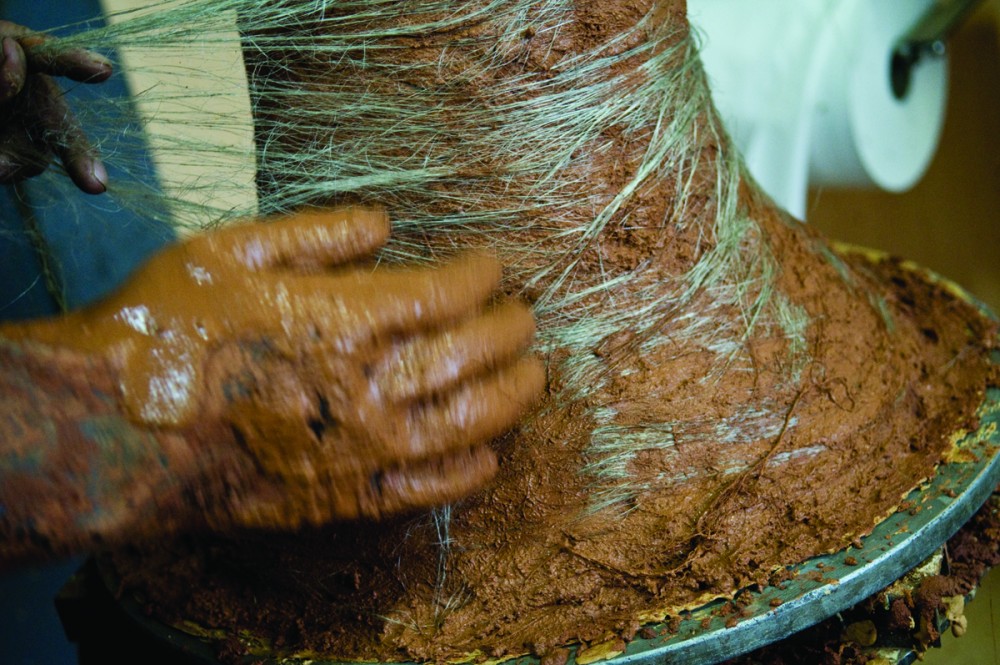
Finishing the cope with shredded hemp. Credit © James O’Mara
Medieval and Renaissance bell makers, called saintiers, traveled from place to place, casting their bells on site, often working in a hole dug in front of the church or tower for which the bell was destined. Antoine Paccard began as an apprentice to such an itinerant craftsman. He cast his first bell in 1796 in the commune of Quintal, near Annecy, then set up his own shop there. In 1857, Antoine’s grandson moved the expanding foundry to Annecy-le-Vieux, the city’s Old Town, where it remained until 1989, when it moved to its current location in the village of Sévrier, a few miles down the lakefront. But very early on, a distinct shape and sound began to identify a bell as a Paccard.
The unique sound of a bell begins with the drawing of its form on a wooden or metal board called a strickle. The strickle board is used to create the bell mold, which is made up of the core, the false bell and the cope. Working from the inside out, the core is made of sand and bricks covered with clay. The false bell is made of clay, sand and hemp and is an exact model of the real bell to come. The false bell is coated with a thin layer of soft wax and then decorated with ornamentation and letters made of wax. The outside of the mold, the cope, is built on top of the false bell by layering clay reinforced with hemp.
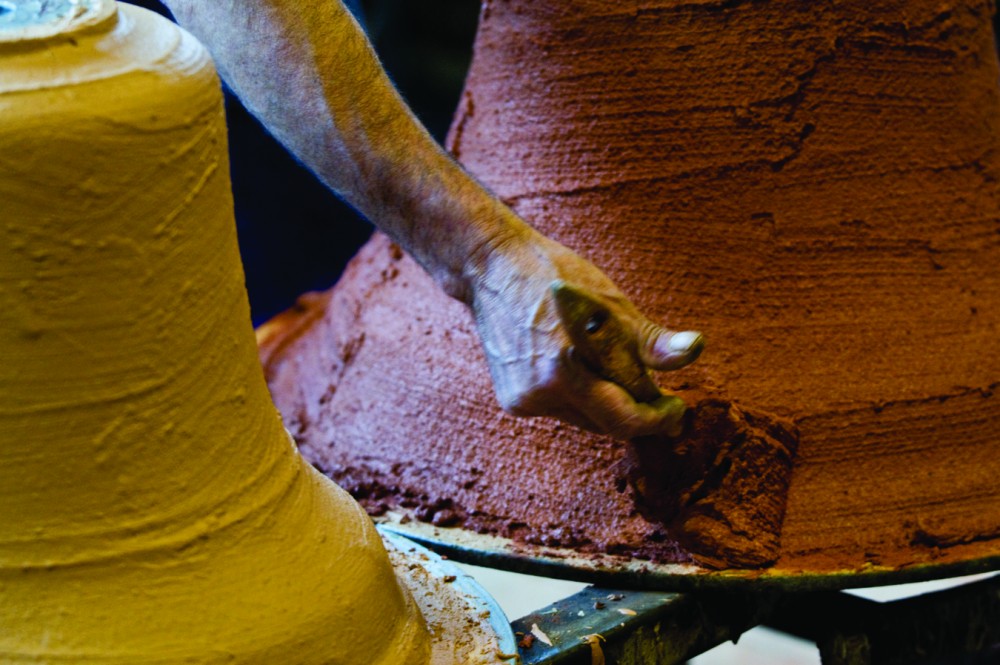
The making of the cope, applying the clay. Credit © James O’Mara
Once the bell mold dries, the inside of the core is heated. The wax melts and drains out from the mold creating a hollow relief in the cope. The cope is secured within a metallic cover and raised up with a rope and tackle. The false bell is broken away and the cope replaced over the core, leaving an empty space for the pouring of the molten liquid bronze, which is composed of 78 percent pure red copper and 22 percent tin. The bell hardens for several days to a week or more after the pour. The mold is then lifted and broken, revealing the black and grey bell, ready to be polished.
Every bell has a specific tone resulting from its size and shape. The tone is made up of five elements, tuned in order to achieve perfect harmony. Bells are cast slightly larger than required; the bell is then spun on a lathe and metal is carefully shaved away in order to produce a true tone. The larger the bell, the deeper the tone.
One of the largest and most famous bells in France is the Savoyarde, in the bell tower of Sacré Coeur basilica in Paris, cast by the Paccard foundry in 1891—the name refers to France’s annexation of Savoy in 1860. The bell weighs some 19 tons and is nearly 10 feet tall, with a 30-foot circumference.
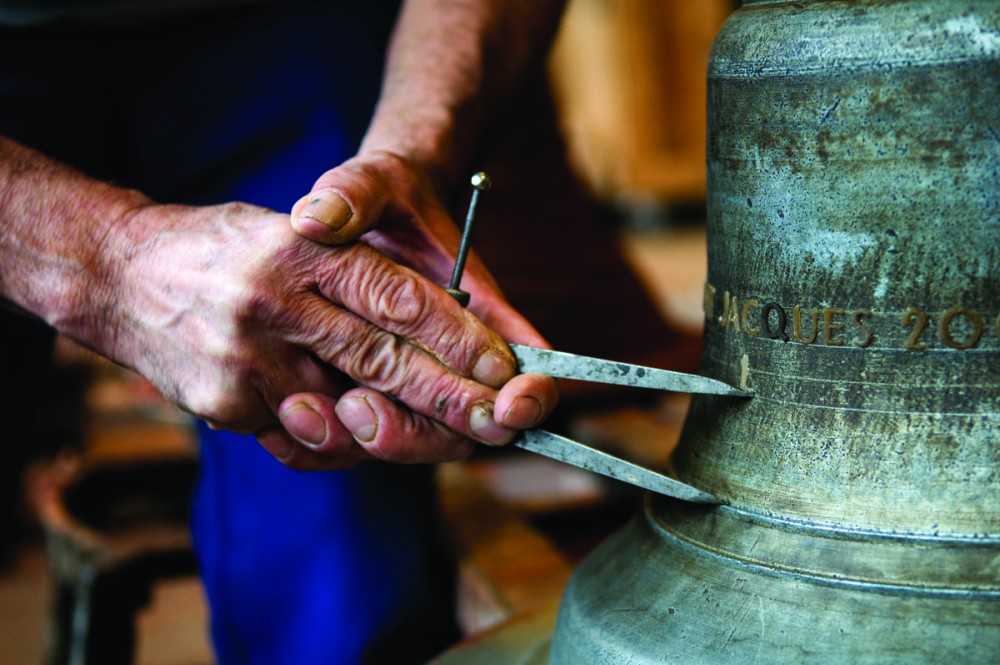
Credit © James O’Mara. Placing the inscription on the false bell, part of the lost wax process
Another famous order came in 1950, when the United States government ordered 49 copies of the Liberty Bell from the Paccard foundry—each with a faux crack painted on for verisimilitude—to be carried around the country’s then 48 states and the District of Columbia, ringing up support for US savings bonds. Since then, Paccard has made some 300 replicas of the Liberty Bell in various sizes, including one presented to French President Nicolas Sarkozy last spring.
In 1985, the Paccards cast three bells that together form the largest set of swinging bells in the world, ordered by the Slovak Greek Catholic Foundation in Ontario, Canada. The bells, which now hang in the Cathedral of the Transfiguration in Markham, Ontario, are named Etienne (19 tons), Anne (10 tons) and Daniel (6 tons).
Paccard’s single weightiest achievement to date is the 33-ton World Peace Bell, the world’s largest swinging bell, made for the Millennium Monument Company in Newport, Kentucky. It rang for the first time on December 31, 1999.
Seventh generation Philippe Paccard, assisted by his brother Cyril, now runs the business, producing carillons, chimes and bells. Their most recent innovation combines bells with unique, monumental sculptures, called Ars Sonora, to be placed in town squares and corporate complexes.
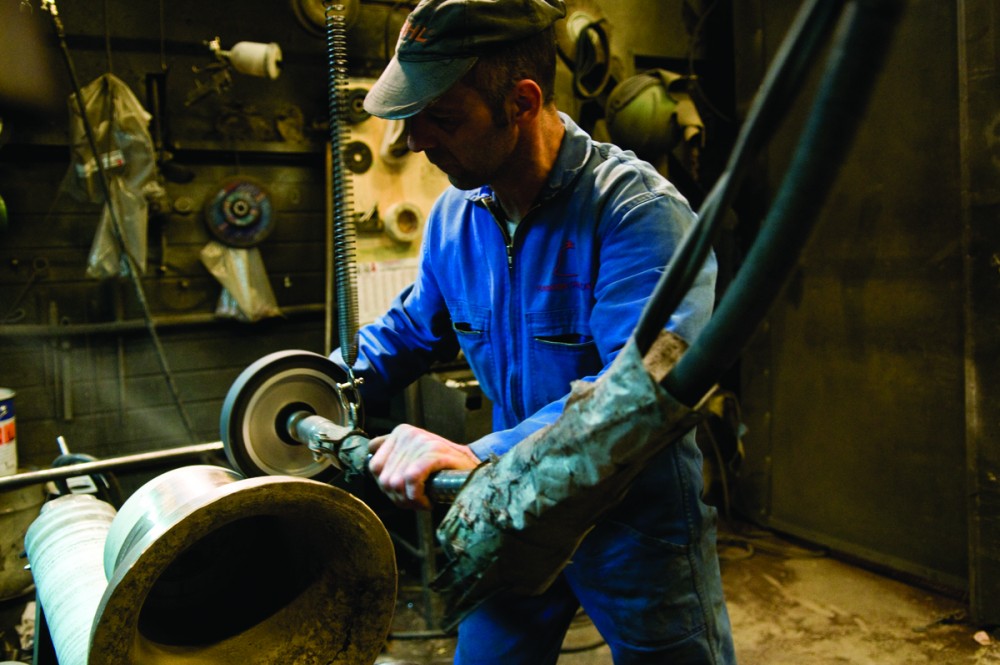
Polishing the bell. Credit © James O’Mara
In 2007, the family also completely renovated the Musée Paccard, next to the factory, which documents the 4,000-year history of bell making, and the techniques of molding, casting and tuning. The visit takes about an hour, and of course there’s a bookshop and boutique.
Over the past year, Paccard projects have included three bells made on site for the Notre Dame de l’Assomption basilica in Nice—Virgo Fidelis, Regina Pacis and Mater Admirabilis—and a dramatic 48-bell Ars Sonora sculpture installed last May in Notre-Dame-de-Bondeville, near Rouen, as well as bells for churches in Switzerland and Spain.
When asked about the future of the company, Philippe’s wife Anne relates that Antoine, the eldest of their children, is currently considering either the priesthood or bell making. He hasn’t decided yet but, she adds, “He has time, he’s only fourteen. And in any case, both professions include bells!” No matter what Antoine decides, since there are four younger brothers at home, the art of bell making is quite likely to pass along to the eighth Paccard generation on the shores of Lac d’Annecy.
Musée Paccard 215 route du Piron, Sévrier, 04.50.52.47.11. Open Mon–Sat and Sun afternoon all year. Guided tours of the foundry workshop are available. website
Tip: if you visit on a Thursday, it might be possible to see the actual casting of a bell.
Originally published in the January 2011 issue of France Today; updated in June 2013.
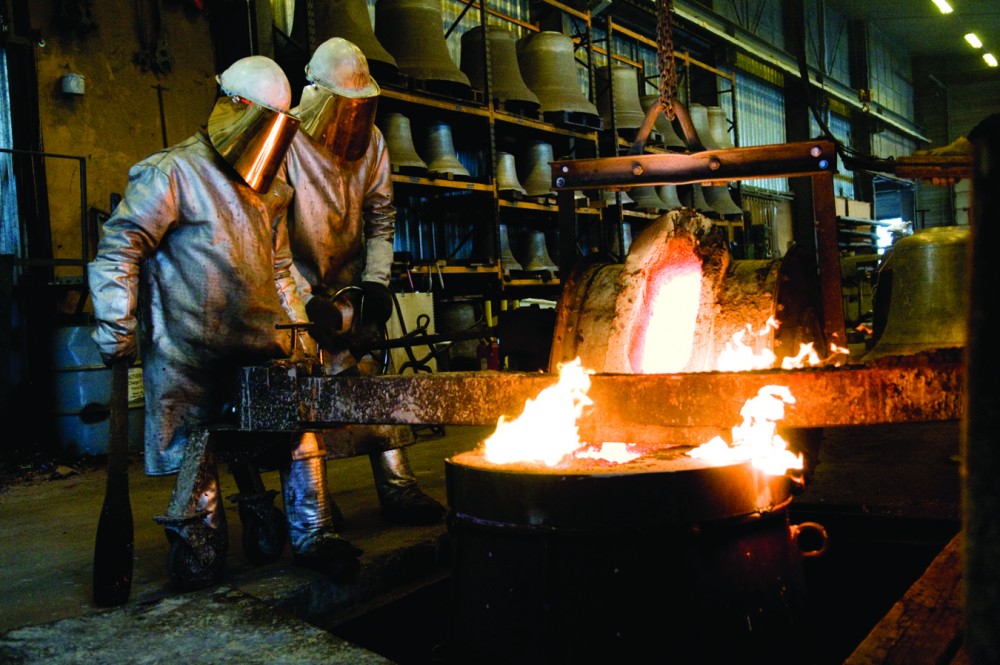
The pouring of the molten bronze. Credit © James O’Mara
Share to: Facebook Twitter LinkedIn Email
Leave a reply
Your email address will not be published. Required fields are marked *




REPLY